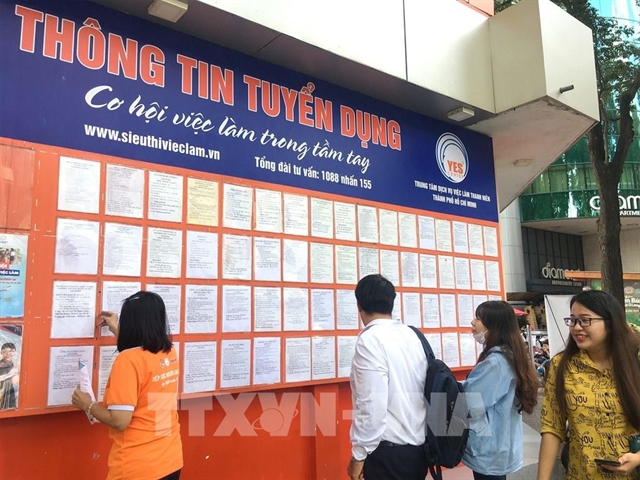 Society
Society

Businesses in HCM City are expected to recruit an additional 33,000-42,000 employees until the year end, with part-time and seasonal jobs accounting for a majority, according to the city's Centre for Human Resource Forecast and Labour Information.

|
| Labourers look for jobs at the Youth Employment Services Centre in HCM City. VNA/VNS Photo Thanh Vũ |
HCM CITY — Businesses in HCM City are expected to recruit an additional 33,000-42,000 employees until the year end, with part-time and seasonal jobs accounting for a majority, according to the city's Centre for Human Resource Forecast and Labour Information.
Businesses have increased temporary employees in line with rising output requirements for the Tết (the Lunar New Year) holiday.
The Youth Employment Services Centre has received requests for more than 2,000 seasonal workers from 10 businesses in HCM City, but few positions being filled, said Nguyễn Thị Thanh Thảo, head of the centre’s employment services department.
Students from colleges and universities previously took seasonal jobs during the Tết, but this year most of them left the city for their hometown as schools shifted to online learning.
In October the centre launched a labour support programme after the lockdown was lifted on October 1, offering a free employment consulting service, free COVID-19 tests and cheap or zero-đồng accommodations for migrant labourers.
But the number of applicants has been far below recruitment demand.
According to a report on the COVID impact on labour and employment in the third quarter of 2021 published by the General Statistics Office, labour supply decreased as workers returned to their home provinces, leading to a labour shortage in many businesses.
The highest proportion of businesses with labour shortages was in the southeast region, with 30.6 per cent. In this region, provinces with the most severe labour shortages were Bình Dương (36.9 per cent), Bình Phước (34.4 per cent) and HCM City (31.8 per cent). —VNS